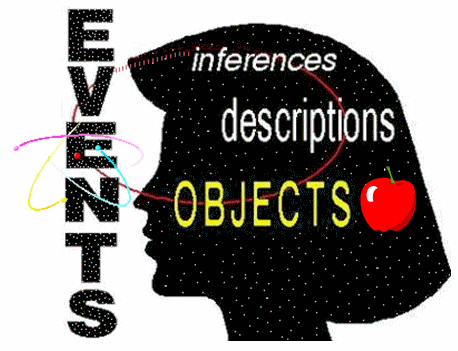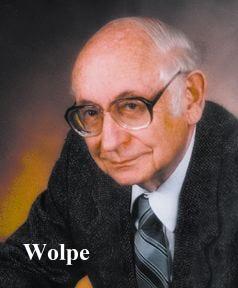
Reciprocal Inhibition
Written 2025 by Steven LewisJoseph Wolpe was disillusioned with the success rate of therapies used to treat 'shell shocked' soldiers in World War II, so in 1946 he undertook a series of experiments on domestic cats modelled after the experiments of Ivan Pavlov to investigate the formation and extinction of anxiety reactions. Out of these experiments arose his theory of psychotherapy through reciprocal inhibition -- "behavior therapy" -- which he introduced to the world in the early 1950s. From the outset Wolpe's theory and techniques were extensional and non-elementalistic, addressing 'misconceptions' where present, all the while focusing on DOING as opposed to mere talking as a means to overcome undesired reactions.
Wolpe's goal was to help distressed individuals overcome what was distressing them so that they could live a fuller life. Success was measured in terms of a patient's ability to DO better, not merely by whether they said they felt better.

Wolpe used "behavior" in a non-elementalistic (organism-as-a-whole) sense, including higher neural functions ("covert behaviors"). In his 1958 book "Psychotherapy through Reciprocal Inhibition," Wolpe stated explicitly that his use of the term behavior includes 'thought' as well as action. The function of the nervous system, including the higher centers, is as much behavior as the gathering of nuts by a squirrel. Some behaviors are inborn, some are learned; some learned behaviors are flexible, some are rigid. Wolpe's lifework was spent developing tools to overcome certain types of rigid learned behaviors. In the process he produced a general theory of change; specifically, how to change our behaviors on all levels more efficiently. That theory Wolpe called "reciprocal inhibition" or, more commonly, "behavior therapy."
The term "reciprocal inhibition" was introduced by the physiologist Sherrington early in the 20th century to describe the nervous system's control of antagonistic muscles. For example, when you contract your biceps brachii to lift your coffee cup you must relax ("inhibit") its antagonist, the triceps brachii, so that it won't resist the movement. Wolpe expanded use of the term by observing that to change pre-established behaviors you must evoke alternative behaviors in situations that would normally evoke the established ones. For anxious patients Wolpe began by training them in a relaxation technique, such as Edmund Jacobsen's Progressive Relaxation. Once they had mastered the relaxation response he would expose the patients to a hierarchy of anxiety-provoking stimuli while they practiced their relaxation response. Once a patient had replaced their anxiety reaction with a relaxation response at one level they would move farther up the hierarchy until their anxiety response had been extinguished. Wolpe called this hierarchical procedure "systematic desensitization."
Wolpe found that no cognitive therapy ("correction of false beliefs or assumptions") is necessary in cases where misconceptions are not an active causative factor in the misevaluation. The neurotic reactions themselves usually support the related negative feelings of hopelessness, worthlessness ... and when the neurotic reactions are extinguished these related covert behaviors abate too.
Wolpe writes:
"Whereas behavior therapists use cognitive methods only in cases in which anxieties have evident misconceptual sources, cognitive therapists use them in all cases. This means that when a misconceptual basis for anxiety is not presented by the patient, the cognitivists invent them. They do this in different ways. [Albert] Ellis routinely imposes on the patient an array of irrational thoughts that he assumes all patients have -- such as 'awfulizing,' or adhering to an irrational system of 'musts' and 'must nots' .... It is noteworthy that when treatment of these cognitive artifacts is added to behavior therapy it does not improve outcomes (Latimer & Sweet, 1984)." (Wolpe, p131-132, 4th edition)
Moreover, Wolpe noted that talk therapy alone is seldom sufficient to transform a neurotic reaction. Even habitual reactions developed from mistaken beliefs often cannot be changed merely by correcting the mistaken belief. They must be treated using non-elementalistic methods. He wrote:
"... many timid people believe that it is right always to turn the other cheek. Before they can be taught assertiveness they must realize the futility of following that principle in most circumstances. BUT THE REALIZATION BY ITSELF DOES NOT CURE THE TIMIDITY." (Wolpe, p102, 4th edition) (emphasis mine)
What Wolpe does not address is the use of 'cognitive methods' as preventive 'psycho-therapy.' Prevention, of course, was a major focus of Korzybski's work. Training in the extensional methods of General Semantics could lessen the chances of a relapse of a patient's symptoms and prevent future adverse reactions from developing.
Wolpe introduced his "behavior therapy" as an organism-as-a-whole alternative to the pervasive talk therapies like psychoanalysis that dominated the first half of the 20th century. Many authors have added their own spins to Wolpe's basic work, but their success is dependent on a non-elementalistic ("organism-as-a-whole") approach that Wolpe's psychotherapy through reciprocal inhibition makes possible.
Korzybski spoke of General Semantics as the tensor school of human evaluation because it reduced human evaluation to the simplest observable structural terms possible. Korzybski's asides about jazz, philosophers, homosexuals and the over-dispersed colloids of schizophrenics should be seen as background noise in his system. The many variants of Korzybski's theory that have been produced have also introduced irrelevant, even false, structural notions -- "background noise." Check, for example, the 'New Age' writings of Gina Cerminara or the works of J.S. Bois or the SigmaEOS of David Bourland. Similarly, Wolpe's reciprocal inhibition therapy can be labeled the "tensor school" of psychotherapy. Chances are if you follow the procedures developed by Wolpe and his co-workers you will overcome your neuroses and many other maladaptive reactions as well. Background noise about 'egos' and 'self-esteem' don't serve any essential role in the recovery, but do offer an author a way of selling a unique product.
References:
Wolpe, Joseph. Psychotherapy by Reciprocal Inhibition. 1958. Stanford University Press.
Wolpe, Joseph. The Practice of Behavior Therapy, 4th edition, 1990, Pergamon Press.
Poppen, Roger. Joseph Wolpe, 1995, Sage Publications.
General Semantics Home Page ||| Steven Lewis Home Page